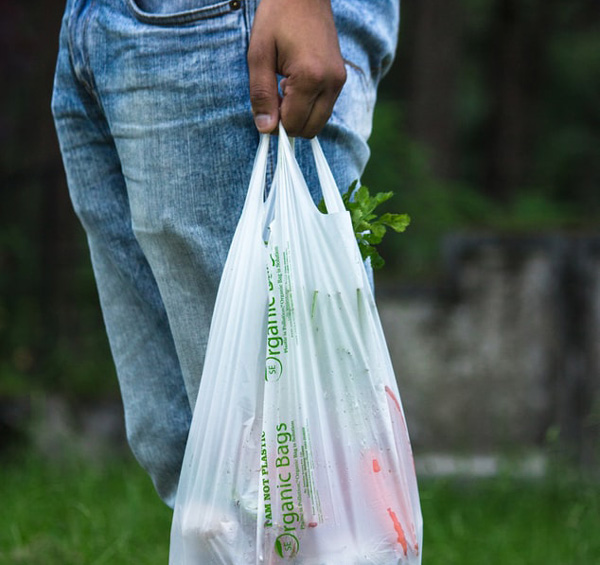By Ed Tedtmann

When I look at all the plastic items in our recycle bin, I know we use way too much plastic. According to the Environmental Protection Agency (EPA), in 2018 there were 17,890,000 tons of plastic waste. Only 8.7 percent of that waste was recycled. Wow! We are making and collecting a lot of plastic. You have to wonder if there is another way to package all the goods we need and want. Could bioplastics be a solution?
The first plastic was made in 1862 from nitrocellulose, a bioplastic. In 1912 came the invention of cellophane, made of wood, cotton, or hemp cellulose. Then in 1926, there was the first bioplastic made from bacteria. In 2012, a bioplastic was developed from seaweed.
Bioplastic is a material that can be shaped or formed from biomass, which is made from agricultural starch waste like leaves or tops of sugarcane. Some bioplastics are biodegradable, but some are not. Some do not biodegrade any faster than fossil fuel derived plastics. Also, for bioplastics to biodegrade, they need to be sent to a composting facility. In 2018, the EPA recorded zero composting of recyclables in the U.S.
In addition to composting and biodegradable issues, bioplastics create other environmental concerns. The agricultural waste that is used to produce bioplastics comes from sources such as corn, soybeans, and sugarcane, which require large amounts of nitrogen and potassium to fertilize. These chemicals eventually filter into water bodies, resulting in algae blooms that create oxygen dead zones, killing aquatic animals. Also, high water consumption, soil erosion, soil carbon loss, and loss of biodiversity result from land use associated with bioplastic industrial farming. It is estimated that replacing the 250 million tons of plastic manufactured each year with bioplastics would require seven percent of the arable land on earth.
However, bioplastics made from seaweed are promising. No land is required, nor is there any need for fertilizer or water. Other advantages are a reduction in carbon dioxide emissions that result from farming, a higher productivity, and no risk of potential deforestation. In addition, seaweed bioplastics break down in six weeks. This is an emerging industry, though. It will take time for it to catch up with demand.
In the meantime, bioplastics that are biodegradable are still desirable. To be most advantageous, these bioplastics need a compost facility. They are made to breakdown in soil with a high microbial diversity. Yet, bioplastics in soil environments need higher temperatures and time to biodegrade. Composting not only biodegrades bioplastics efficiently, but it also reduces greenhouse gases. Unfortunately, waste management has not addressed the issue of composting, and that is probably due to the limited quantity of biodegradable bioplastics being produced.
At this point in time, bioplastics are not commercially significant. Cost and performance remain problematic, and bioplastics represent less than one percent of all plastics manufactured worldwide. For now, the best strategy is to limit our use of plastics. We need to take our cloth bags to the grocery store, buy produce from bulk bins instead of those packaged in plastic containers, purchase eggs in cardboard containers, etc. We vote for change with our purchasing practices.
Take Action: Sign Sierra Club’s Stop Using Plastic Bags Publix Petition to ask Publix to stop using single use plastic bags at the checkout.